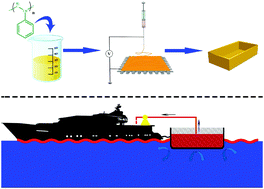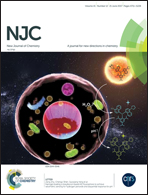Anticorrosive superhydrophobic polystyrene-coated mesh for continuous oil spill clean-up†
Abstract
Light oils float on top of water and therefore cannot pass through two-dimensional (2D) superhydrophobic meshes by a purely gravity-driven process, which poses a problem for separating light oil from water without a tilting device. Herein, a superhydrophobic polystyrene-coated mesh was successfully fabricated by electrospinning and then folded around a three-dimensional (3D) miniature box. Compared with traditional 2D superhydrophobic meshes, the as-prepared 3D superhydrophobic box does not require a tilting device and can remove oils (both heavy and light oils) from water with a separation efficiency of up to 99.92%. More importantly, the potentiodynamic polarization curves of the polystyrene-coated superhydrophobic aluminum surfaces were tested in 3.5 wt% NaCl aqueous solution, and the results indicated that the superhydrophobic coating had an excellent corrosion resistance. Moreover, the superhydrophobic 3D miniature box was able to separate oils under harsh conditions, such as in strongly acidic, alkaline, and hyperhaline solutions, and even hot water (92 °C). In addition, we performed an oil/water separation under a continuous vacuum regime using the superhydrophobic 3D miniature box, thus demonstrating its potential applications in oil spill remediation.



 Please wait while we load your content...
Please wait while we load your content...